The Overrated Muse: A Creative Engineering Manual for Professionals (Even When Inspiration Is on Strike)

Berto is sitting at his desk. The coffee, made in a moka pot that has seen better days, is now lukewarm. On the screen, a cursor flashes. It's a digital, immaculate, and provocative white. Whether it's a Google Docs sheet, an artboard in Illustrator, or the empty timeline in Premiere Pro, the result doesn't change.
Berto is a creative. A designer? A copywriter? A social media manager? It hardly matters. Today, Berto is simply a professional in waiting.
He's waiting for Her. The Muse.
That mythological, ethereal, and capricious figure who, according to romantic myth, is supposed to descend from the heavens (or from a cloud of moka pot steam) and whisper the "Big Idea" in his ear. The headline that converts, the logo that evokes emotion, the video edit that brings a tear to the eye.
Well, Berto. Wait all you want. The cursor keeps flashing. The client, however, does not. The client has a deadline.
Welcome to the biggest and most romantic misunderstanding in our industry: waiting for inspiration.
We at Insight work with creativity every day. It's our product and our tool. And we have learned, the hard way, a fundamental truth: professional creativity isn't a lightning bolt; it's an electrical system. You don't wait for it to arrive; you design it, you build it, and you learn to flip the switch.
This article isn't about finding inspiration. It's about building it. It's about how Berto can stop staring into the void and start producing work he can be proud of, even at 9 AM on a rainy Tuesday when the only thing feeling inspired is his desire to go back to bed.
Deconstructing the diva (Why the Muse is an unreliable partner)
We grew up with the idea of the tormented genius: the poet who only writes at night, the painter who throws colours onto the canvas in a fit of passion. It's a beautiful story. It's also, for most professionals, a toxic lie.
If your job depends on producing ideas, waiting for inspiration is the strategic equivalent of waiting for it to rain to decide to wash the dishes.
The truth is: inspiration isn't the cause of work; it's the result.
Think about it. How many times has the right idea come to you while you were already doing something else? While you were already fiddling with colours in Illustrator, while you were writing a rough draft of the newsletter, while you were editing a "wrong" sequence of the video.
The great painter Pablo Picasso (someone who knew a thing or two about "genius") said it clearly: "Inspiration exists, but it has to find you working."
Sitting around and waiting, on the other hand, creates a vicious cycle:
-
Waiting: You don't start because you don't feel "inspired".
-
Anxiety: By not starting, the deadline gets closer and anxiety builds.
-
Paralysis: Anxiety is the number one killer of creativity. The more anxious you are, the less open you are to new ideas.
-
Guilt: You end up doing nothing, feeling guilty and even less inspired.
The solution? Stop treating creativity like magic and start treating it like a craft. A noble, complex, at times frustrating craft, but a craft nonetheless. And every craft has its tools. The first, and most important, is discipline.
The engineering of ritual (Discipline is the new inspiration)
"Discipline" is a word that makes many creatives turn up their noses. It sounds grey, boring, the opposite of artistic freedom.
Wrong. Discipline isn't creativity's cage; it's the launch pad.
A routine doesn't force you to be creative, but it creates the ideal conditions for creativity to emerge with less friction. It lowers the so-called "activation energy".
Let's take two archetypes of successful professionals. There's the writer who wakes up every single day at 4 AM, writes for five hours, and then goes for a run. And there's the artist who rents an anonymous hotel room, far from home, just to have an empty, quiet space to work in from 9 AM to 2 PM.
What do they have in common? They don't wait. They have created a ritual.
A routine is "every Tuesday at 10 AM, I write the article". A ritual is "every Tuesday at 10 AM, I turn off notifications, make that specific coffee, open my 'Drafts' file, and start writing for 60 minutes, without judgement. Whatever comes out, comes out."
How to build your creative ritual (a practical guide):
-
Define the Space: You don't have to rent a hotel room. It can be your desk, but it must be ready. Berto, for example, might find his block vanishes if, the night before, he closes all his browser tabs and leaves only the software he needs open. The first sight in the morning isn't chaos; it's a call to action.
-
Define the Time (Time Blocking): You don't need to work 8 hours straight. It's often counterproductive. Try the Pomodoro Technique, but adapt it. Not "25 minutes of work," but "25 minutes of exploration." For 25 minutes, Berto the designer can download 10 different fonts and try them all, even the ugly ones. It's work, even if it feels like play.
-
Define the Trigger: Rituals have a beginning. It could be a specific playlist (instrumental only, so as not to distract), a type of drink, or a simple exercise. One of our copywriters, before writing a sales page, reads negative reviews of a competitor's product for 10 minutes. It's their trigger to get into the right mood.
-
Define a Process Goal (Not an Outcome Goal): This is fundamental. The goal shouldn't be "write the perfect article." The goal should be "write 500 words." The videomaker's goal isn't "edit the final scene," but "review all the footage and put the 3 best clips for each scene on the timeline." These are achievable goals that build momentum.
Discipline, understood this way, is an act of empathy towards your future self. It's preparing the ground so that when the small, fragile idea knocks on the door, it will find everything ready to be welcomed.
Anatomy of a block (What's really behind that "lack of inspiration")
Berto is still staring at the cursor. He's tried to create a ritual. He's made the right coffee, put on the "Deep Focus" playlist. But it's not working.
Why? Because very often, what we call a "lack of inspiration" is actually a more poetic name for a much more mundane feeling: fear.
Waiting for the Muse is a very elegant form of procrastination. And procrastination is a defence mechanism. It's our brain trying to protect us from discomfort.
But what discomfort?
1. Paralysing Perfectionism
Enemy number one. Berto isn't afraid of having no ideas. He's afraid of having mediocre ideas. He wants the first draft to be the final draft. He wants the first layout to be the one the client approves.
In videomaking, it's called "fear of the edit". You have 5 hours of footage and you know the first 30 minutes of work will just be "cleaning up", a dirty, uncreative job. So, you don't even open the software. In design, it's the "fear of the first mark". The first line you draw on the artboard seems so clumsy and final that you prefer not to draw it at all.
The cure: Embrace the "Zero Draft". Give yourself explicit permission to be crap. Write the most banal newsletter in history. Design the most clichéd logo you can think of. The point isn't to create the finished product; it's to break the inertia. Once there's something on the page (words, shapes, clips), your brain switches from "Creating from nothing" mode (terrifying) to "Problem-solving" mode (much easier). You can fix, improve, cut. But you can't fix a blank page.
2. Fear of Judgement (Imposter Syndrome)
"What will the client think?", "What will my colleagues say?", "This stuff is blatantly copied from that other designer who's better than me." This fear leads us to discard ideas before we've even explored them. We self-censor so quickly that we convince ourselves we never had them in the first place.
The cure: Separate the two phases: Creation and Revision. They are two different, almost opposing, mental processes.
-
Phase 1 (Creation/Divergence): This is brainstorming. Here, judgement is forbidden. Every idea is legitimate. The goal is quantity. Write 20 headlines, even the ridiculous ones.
-
Phase 2 (Revision/Convergence): Only afterwards do you put on your critic's hat. Start selecting, combining, improving. But you can't revise what hasn't been created.
3. Fear of "Too Much" (Decision Overload)
Sometimes the problem isn't the void; it's the glut. Too many references. Too many requests in the client's brief. Too many possibilities. Berto the designer has to create a visual identity, and the client said, "I like both this minimalist style and that super baroque one." The brain stalls. It's analysis paralysis.
The cure: Constraints. Creativity isn't born from absolute freedom; it thrives on constraints. If you don't have constraints, invent them.
-
Designer: "I'll try to make this logo using only two colours and a single font."
-
Videomaker: "I'll try to tell this story using only hard cuts, no dissolves."
-
Copywriter: "I'll try to write this post without using any adjectives." Constraints force you to find ingenious solutions.
Identifying the real block is the first step to overcoming it. It's not the Muse ignoring you; it's you who, out of fear, has double-locked the door.
4. The Empty Tank (It's not a block, it's burnout)
There's one last possibility. Sometimes Berto isn't afraid. Sometimes Berto is just, simply, tired. We live in a culture that glorifies the hustle, non-stop work, toxic productivity. But creativity is a muscle. If you train it for 12 hours a day, for weeks, it doesn't get stronger: it tears. What Berto might be experiencing isn't a "block" to be overcome with a technique, but an exhaustion to be cured with rest. It's his brain that has run out of fuel (glucose, dopamine, patience) and is going into protection mode.
The cure: Don't push it. Pushing it here is like trying to withdraw from an overdrawn current account: not only do you get nothing, but you pay the fees. The cure isn't "work harder" or "work smarter". It's to stop. Really. And not for an hour. Maybe for a day. True rest isn't a luxury; it's mandatory maintenance.
Identifying the real block is the first step to overcoming it. It's not the Muse ignoring you; it's you who, out of fear or exhaustion, has double-locked the door.

The professional's arsenal (How to force connections)
Okay, Berto gets it. He has to stop waiting. He understands his "lack of inspiration" is probably fear. But, practically speaking, what does he do? How do you generate an idea when the tank is empty?
This is where the engineering comes in. If creativity is connection, our job is to accumulate "dots" to connect and then actively build the "bridges".
This chapter is your arsenal.
Tool 1: The Omnivorous Notebook (Accumulating Input)
Inspiration doesn't come from nowhere. It comes from everything you consume. Ideas are often just old elements combined in a new way. The problem is, when you need the idea, you don't remember the elements.
Stop relying on your memory. Become a serial collector of anything. Not just references from your industry. That's a common mistake. If you're a logo designer and you only look at logos, you'll only make logos that look like other logos.
Berto needs an "omnivorous notebook" (a physical one, or an app like Notion, Evernote, or even just a folder on his desktop). In it, he should put:
-
The photo of a manhole cover with an interesting texture.
-
A line of dialogue heard in a film.
-
The colour palette of an old Soviet propaganda poster.
-
The diagram from a biology textbook.
-
A conversation overheard in a café.
This isn't work; it's fuel. You're filling the pantry. When it's time to cook (create), you'll have the ingredients.
Tool 2: The "Cut-Up" Technique 2.0 (Deforming the Obvious)
David Bowie was famous for his "cut-up" technique: he would take a page of text, cut it into individual words, mix them up, and create new lyrics. He was forcing his brain to make illogical connections, which often turned out to be brilliant.
How can Berto use this?
-
Berto the Copywriter: He has a brief for a sunscreen. The usual words are: "protection", "summer", "skin", "sun". Dull. He takes these words, writes them on sticky notes. Then he writes completely different words, taken from another field, for example "finance": "shield", "capital", "investment", "secure".
-
Combining: "Protect your skin capital." "The secure investment for your summer." Different communication angles begin to emerge.
-
-
Berto the Designer: He needs to make a poster for a music festival. Instead of using photos of guitars, he takes the brief, prints it, cuts it up, and reassembles it randomly, creating an abstract typographic composition. That becomes the visual basis for the poster.
Tool 3: The "Dirty Work" (Active Procrastination)
Sometimes the brain refuses to tackle the main task (the "creative work"). That's fine. Trick it. Make it do a related but simpler, almost mechanical, job.
I call this "Active Procrastination".
-
Berto the Videomaker: He can't start editing. Instead, he spends an hour organising the B-roll files. He renames them, assigns them colours, creates the bins. It's a boring job, but while he's doing it, he's watching the material. He starts to notice things. "Oh, this shot isn't bad." "Maybe I could start with this one." Without realising it, he has started editing in his head.
-
Berto the Designer: Stuck on the logo. Instead, he opens the client's file and spends 30 minutes tidying up the layers, grouping elements, creating a clean library of the brand's colours. It's an almost Zen activity. It relaxes the brain from the pressure of "creation" and immerses it in the language of the project.
-
Berto the Marketer: He doesn't know what strategy to propose. Instead, he spends an hour doing "useless" keyword research, exploring related niches. He's just browsing. But from that curiosity, the idea for a new content pillar can be born.
The "dirty work" is a Trojan horse. It tricks your fear by letting you into the project through a side door.
Tool 4: The Lateral Journey (The Analogy)
Ask yourself: "What does this problem look like in a completely different sector?"
-
Problem: "I have to design a UI for a finance app, but it must be simple and reassuring."
-
Lateral Journey: "Who else has to manage complex information in a reassuring way?"
-
An airline pilot? (Cockpit: only essential info, clear visual hierarchy).
-
A surgeon in an operating theatre? (Vital monitors: clear colours for 'normal' and 'alert').
-
An air traffic controller? (Radar: clear tracking, fluid movement).
-
Now Berto has a load of visual metaphors (dashboards, vital monitors) that have nothing to do with banks, but can inspire a unique and functional design.
Tool 5: Problem Inversion (The Devil's Advocate)
The brain loves to run on tracks. Sometimes, to get off the track, you have to go in the opposite direction. Instead of asking "How do I succeed?", ask yourself "How could I guarantee failure?".
-
Problem: "How do I create the best logo for this client?"
-
Inversion: "How do I create the absolute worst logo? A logo that will make them fail?"
-
Brainstorming in reverse:
-
I'll use Comic Sans (or another overused font).
-
I'll use colours that clash horribly (like fluorescent red and green).
-
I'll make it illegible when small.
-
I'll make it shamelessly resemble its competitor.
-
This process does two things: 1) It's liberating and fun, unlocking performance anxiety. 2) By identifying what is objectively wrong, by contrast, you illuminate what is objectively right ("Ah, so legibility is crucial," "Ah, the colours must be harmonious and unique").
Tool 6: The Walt Disney Strategy (The Three Bertos)
A classic problem-solving technique. Your block often comes from your inner "Critic" silencing your inner "Dreamer" before it can even speak. You need to separate them. Create three "rooms" (metaphorical, or even physical by moving between three different chairs):
-
The Dreamer (The 'Crazy Berto'): Here, anything is possible. There are no budgets, technological limits, or "buts". The ideas are huge, wild, unfeasible. (e.g., "Let's make a commercial on Mars! With dragons!"). The goal is quantity and wildness. Write everything down.
-
The Realist (The 'Engineer Berto'): Only then, the Dreamer leaves. The Realist enters. The Realist doesn't criticise; they plan. They look at the wild ideas and ask: "Okay, Mars is nice. How could we do that... on a small scale? With our budget? What are the technical steps?". (e.g., "We can't go to Mars, but we could use CG for a red sky, or maybe just a desert that looks like Mars. The dragons are probably too much, but the 'mythological' idea is interesting...").
-
The Critic (The 'Client Berto'): Only at the end does the Critic enter. Their job is to find the holes in the Realist's plan, not in the Dreamer's ideas. "This desert idea has been done." "There's no budget for CG." "The target audience won't understand the Mars metaphor."
By separating the roles, you allow ideas to be born (Dreamer), take shape (Realist), and be tested (Critic) without getting in each other's way.
You don't need the Muse. You need a process. Inspiration isn't the starting point; it's the end point of a job of engineering, exploration, and connection.
The paradox of rest (Why inspiration strikes in the shower)
There's one last piece to the puzzle. And it's the most paradoxical. You've worked hard. You've followed the ritual, you've fought the fear, you've used the tools in Chapter 4. But the idea still isn't there. You're stuck.
Now, Berto must do the hardest thing of all: stop.
Stop? But didn't we just say discipline is everything? Yes. But there's a difference between focused work and grinding.
The brain works in two main modes:
-
Focused Mode: When you're at your desk, concentrating. You are loading data into your brain. This is the work of Chapter 4.
-
Diffuse Mode: When you're distracted. You're taking a walk, driving, having a shower, washing the dishes. Your conscious brain is at rest, but your subconscious is working. It's taking all the data you loaded and shuffling it in the background, looking for connections.
This is why the best ideas seem to arrive far from the desk. It's not magic. It's passive incubation.
But beware: passive incubation doesn't work if you haven't put in the focused work first. You can't have a breakthrough in the shower about a problem you haven't thought intensely about for hours.
And there's rest, and then there's rest. Let's call it "Junk Rest" vs. "Nourishing Rest".
-
Junk Rest: Scrolling through social media (Instagram, TikTok, X). It's fake rest. You're bombarding your brain with new inputs, micro-doses of dopamine, and social comparisons. It's like trying to relax in the middle of a crowded market. When you get back to your desk, you're more tired and distracted than before. You aren't activating the Diffuse Mode; you're just switching the type of Focused Mode (from "work" to "scrolling").
-
Nourishing Rest: This is the true Diffuse Mode. Activities that require little to no conscious attention. Walking (without a podcast!), taking a long shower, cooking, gazing out of the window, even cleaning or driving on a familiar road. These are the activities that give your subconscious the space and silence to work for you.
If you're stuck on the same problem for hours:
-
Get up. Change scenery. Physically.
-
Do a nourishing, mechanical activity.
-
Sleep on it. Sleep is the most powerful creative problem-solving tool that exists.
Rest isn't the opposite of work; it's its strategic continuation. Berto must learn to work hard, but also to disconnect with equal strategy, trusting that his brain, in the meantime, is still clocking in.
Conclusion: Berto, finally, writes
Berto returns to his desk. He went out for a walk. He thought about everything except the project. He watched the people, the dogs, the buildings. He sits down. The coffee is still there, now undrinkable. He opens the file. The cursor flashes.
But now it's different. Berto is no longer waiting. He has his "Zero Draft" full of mediocre ideas. He has his notebook with that photo of rust on a gate. He has the "pilot's dashboard" metaphor in mind.
He starts typing. It's not a perfect sentence. It's a sentence. Then another. He starts moving the shapes on his artboard. He imports a clip onto the timeline and makes a cut.
The Muse didn't arrive. There was no lightning bolt. Berto simply opened the door, turned on the lights, prepared the room, and got to work. And inspiration, seeing that someone was already doing their part, decided to show up. Silently, it sat down next to him and started to help.
💡 The Insight Workshop: Practical Takeaways
Use this box as a first-aid kit for your next creative block.
-
Don't Wait, Trigger: Inspiration is the result of work, not the cause. Your goal isn't "to be inspired," it's "to start."
-
Build a Ritual: Design the first 15 minutes of your work. A trigger (playlist, coffee), a space (clean desk), and a micro-goal (e.g., "write 100 words," not "finish the article").
-
Name the Block: Are you procrastinating? Ask yourself why. Is it Perfectionism? (Solution: create an awful "Zero Draft"). Is it Fear of Judgement? (Solution: separate Creation and Revision). Is it Burnout? (Solution: stop working and truly rest).
-
Use Active Procrastination: If you can't face the main task, do the related "dirty work" (organising files, cleaning up layers, keyword research). You'll trick your brain and warm it up.
-
Force Connections: Use structured techniques. The Lateral Journey (analogy), Problem Inversion (what not to do), or the Walt Disney Strategy (Dreamer, Realist, Critic).
-
Practise Nourishing Rest: If you're stuck, take a break. But avoid "junk rest" (social media). Go for a walk, take a shower, or do a mechanical task. Let your Diffuse Mode work.
By accepting you will be accessing a service provided by a third-party external to https://insightadv.uk/

 IT
IT  EN
EN 

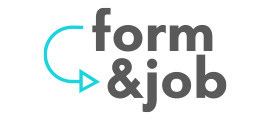





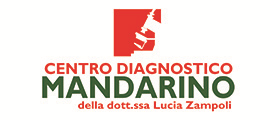



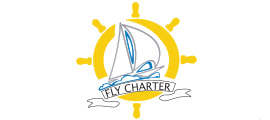


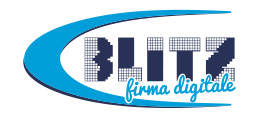

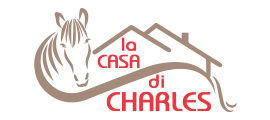
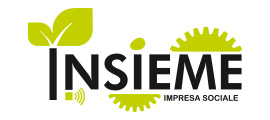
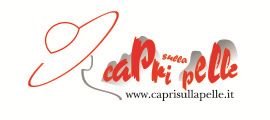

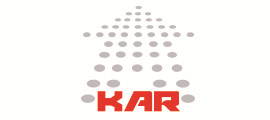

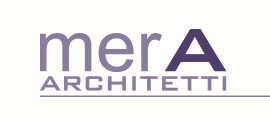
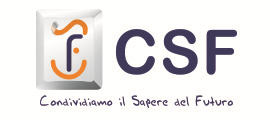
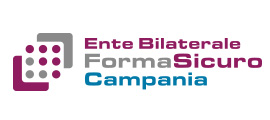

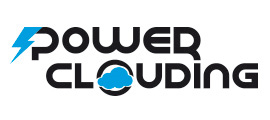
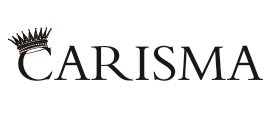
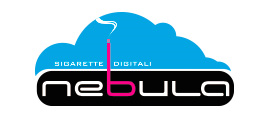

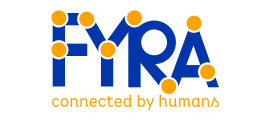
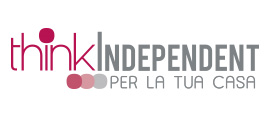



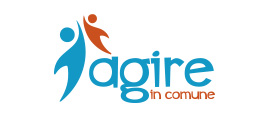


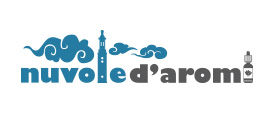

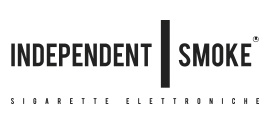
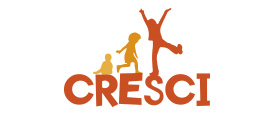





















Comments